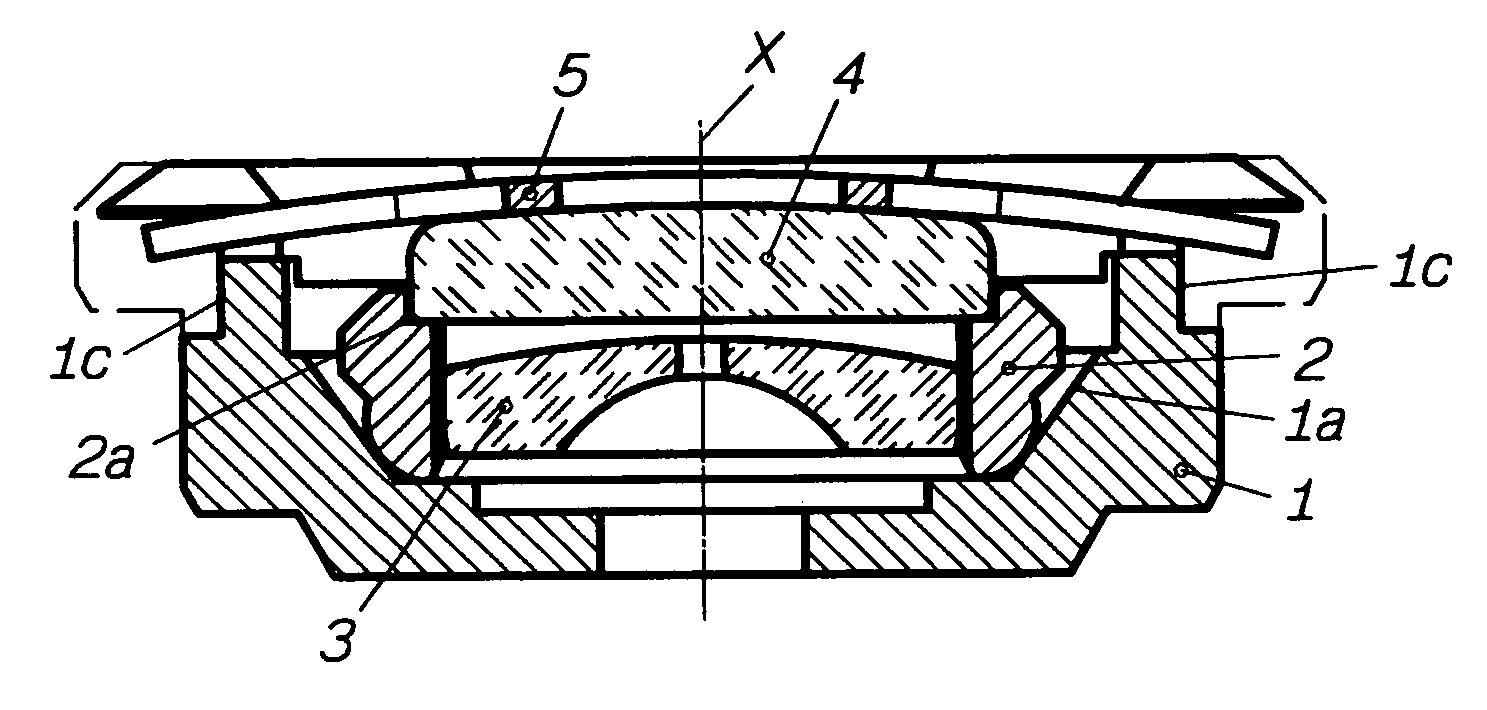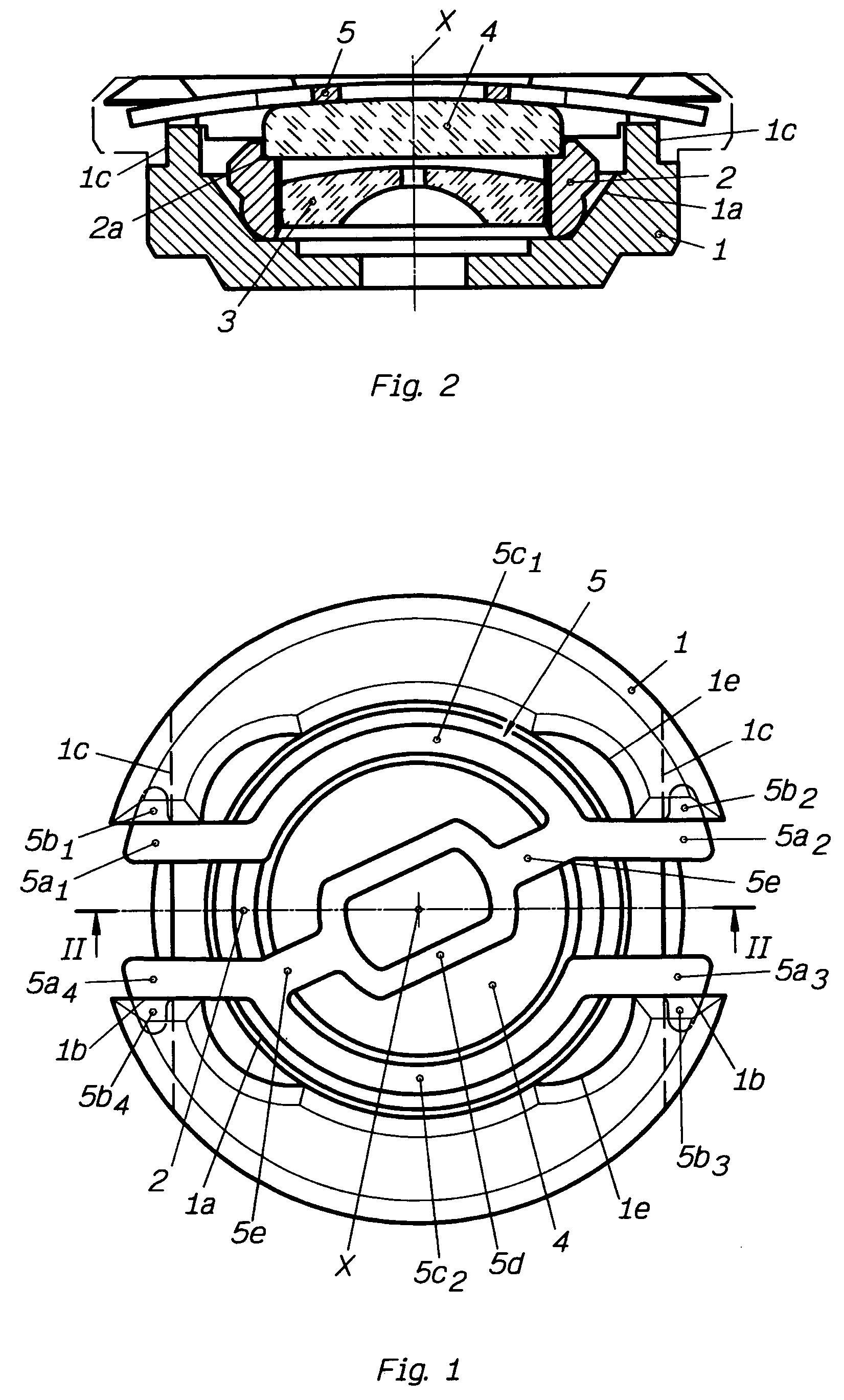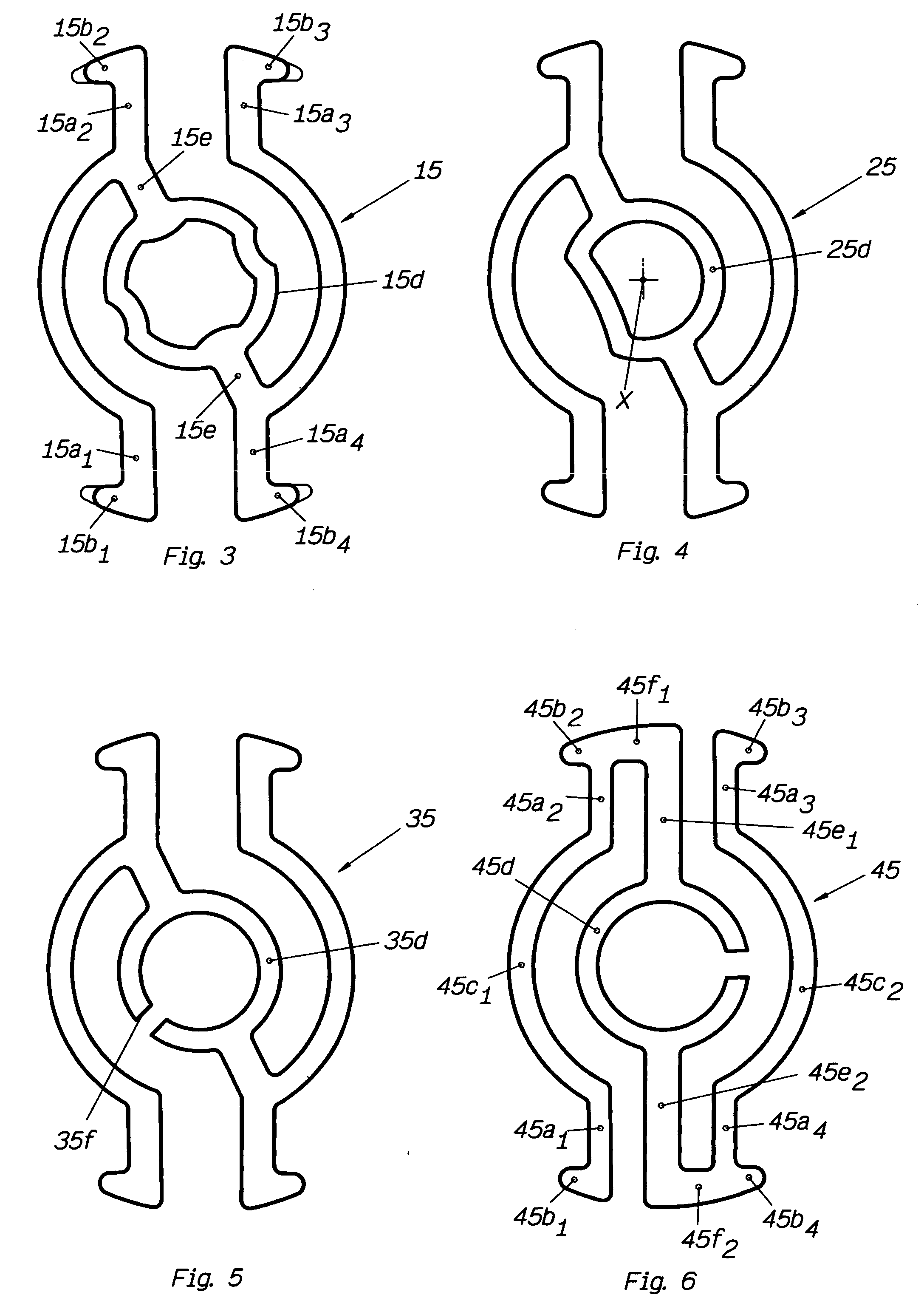Shock-absorbing bearing for timepiece
a timepiece and bearing technology, applied in mechanical clocks, instruments, horology, etc., can solve the problems of design problems, increased handling complexity, and the risk of losing the spring which measures less than 2 mm
- Summary
- Abstract
- Description
- Claims
- Application Information
AI Technical Summary
Benefits of technology
Problems solved by technology
Method used
Image
Examples
Embodiment Construction
[0031] The bearing shown in FIGS. 1 and 2 has a bearing block 1 comprising a seat in the form of a truncated conical cup 1a for positioning a chaton 2 which has a cylindrical part into which a pierced jewel 3 is pressed and which has a seat 2a for an endstone 4. A shock-absorbing spring 5 is fixed to the bearing block 1 to retain the chaton 2 and the endstone 4 in an elastic way in their respective seats 1a, 2a.
[0032] The bearing block 1 has the characteristic of being entirely symmetrical with respect to all the planes containing the pivot axis X of the bearing. A diametric milled area 1b is formed on the upper part of this bearing block and two parallel milled areas 1c, perpendicular to the diametric milled area 1b, are formed on the outside of the bearing block 1, in its thickness, at a certain distance from its upper face.
[0033] These three milled areas 1b, 1c are designed for the fixing of the four linking arms 5a1, 5a2, 5a3, 5a4 of the shock-absorbing spring 5, the two arms ...
PUM
 Login to View More
Login to View More Abstract
Description
Claims
Application Information
 Login to View More
Login to View More - R&D
- Intellectual Property
- Life Sciences
- Materials
- Tech Scout
- Unparalleled Data Quality
- Higher Quality Content
- 60% Fewer Hallucinations
Browse by: Latest US Patents, China's latest patents, Technical Efficacy Thesaurus, Application Domain, Technology Topic, Popular Technical Reports.
© 2025 PatSnap. All rights reserved.Legal|Privacy policy|Modern Slavery Act Transparency Statement|Sitemap|About US| Contact US: help@patsnap.com



